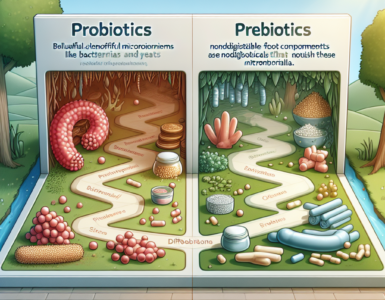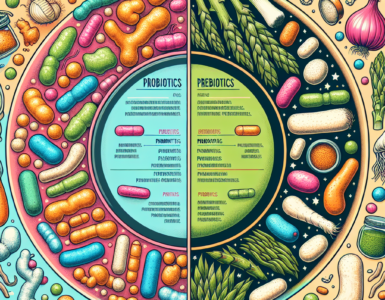In today’s hectic and fast-paced world, it’s easy to lose sight of our happiness. We often find ourselves consumed by our daily responsibilities and obligations, leaving little time for self-care and relaxation. However, it’s important to prioritize our happiness to lead fulfilling and enjoyable lives. In this article, we’ll explore ten practical steps that you can take to increase your happiness and overall well-being.
Understanding the Importance of Happiness
The role of happiness in our lives
Many people believe that success and wealth are the keys to happiness. However, numerous studies have shown that happiness is more valuable than financial gain or career achievements. Happiness is essential to our emotional and physical well-being, and it’s associated with numerous health benefits such as reduced stress levels, lower risk of heart disease, and improved immune function.
Research has also shown that happy people tend to be more productive, creative, and successful in their personal and professional lives. They are more likely to have fulfilling relationships, and they experience greater satisfaction in their daily activities.
Furthermore, happiness is contagious. When we are happy, we tend to spread positivity and joy to those around us, creating a ripple effect of happiness throughout our communities.
The science behind happiness
Recent scientific research has revealed that happiness is not just a vague feeling or emotion, but a measurable state of being. The brain produces specific chemicals, such as dopamine, oxytocin, and serotonin, that contribute to our sense of happiness and well-being.
Dopamine is often referred to as the “feel-good” chemical because it’s released in response to pleasurable experiences such as eating delicious food, receiving a compliment, or achieving a goal. Oxytocin, on the other hand, is often called the “love hormone” because it’s released during social bonding activities such as hugging or kissing.
Serotonin is another important chemical that contributes to our happiness levels. It’s responsible for regulating mood, appetite, and sleep, and low levels of serotonin have been linked to depression and anxiety.
By understanding the science behind happiness, we can take practical steps to increase our overall happiness levels. For example, engaging in activities that release dopamine, such as exercise or listening to music, can boost our mood and make us feel happier. Similarly, spending time with loved ones and engaging in social bonding activities can increase our levels of oxytocin and contribute to our overall sense of well-being.
In conclusion, happiness is not just a fleeting emotion, but an essential component of our overall health and well-being. By understanding the importance of happiness and the science behind it, we can take practical steps to cultivate more joy, positivity, and fulfillment in our lives.
Cultivating a Positive Mindset
A positive mindset can have a significant impact on our overall well-being. It can help us cope with stress, increase our resilience, and improve our relationships with others. Here are some additional tips for cultivating a positive mindset:
Embracing gratitude
Gratitude is a powerful tool for increasing happiness. When we focus on the things we’re thankful for, instead of dwelling on negative thoughts and emotions, we can shift our perspective and improve our overall mood. Practicing gratitude can be as simple as keeping a daily gratitude journal or writing thank-you notes to people who’ve made a positive impact in our lives.
Another way to embrace gratitude is to take a moment to appreciate the small things in life. Whether it’s a beautiful sunset, a delicious meal, or a kind gesture from a stranger, focusing on the positive aspects of our day can help us cultivate a more positive mindset.
Practicing mindfulness
Mindfulness is the practice of staying present in the moment and focusing our attention on the present. By staying mindful, we can reduce stress and anxiety, increase our happiness levels, and improve our overall well-being. Mindfulness can be achieved through meditation, breathing exercises, or simply taking a few moments to notice the sights, sounds, and sensations around us.
Another way to practice mindfulness is to engage in activities that bring us joy and help us stay present in the moment. This could be anything from going for a walk in nature, to practicing yoga, to listening to music that uplifts our spirits.
Challenging negative thoughts
Negative thoughts and self-talk can be a major obstacle to happiness. To combat negative thinking, we need to identify and challenge our negative thoughts. We can do this by asking ourselves if our thoughts are rational and realistic, and replacing negative thoughts with positive ones. By replacing negative self-talk with positive affirmations, we can cultivate a more positive mindset and increase our happiness levels.
Another way to challenge negative thoughts is to practice self-compassion. This means treating ourselves with the same kindness and understanding that we would offer to a good friend. By practicing self-compassion, we can reduce our self-criticism and increase our self-esteem.
By incorporating these practices into our daily lives, we can cultivate a more positive mindset and improve our overall well-being. Remember, happiness is not a destination, but a journey. It’s up to us to choose the path that leads to a happier, more fulfilling life.
Building Strong Relationships
Building strong relationships is a crucial aspect of leading a fulfilling life. Whether it’s with family, friends, or romantic partners, having strong relationships can provide us with a sense of belonging, support, and happiness. In this article, we’ll explore some essential components of building strong relationships and how we can cultivate them.
Communicating effectively
Effective communication is an essential component of building strong relationships. It’s not just about expressing our thoughts and feelings; it’s also about actively listening to others and showing empathy and understanding. When we communicate effectively, we can increase our connection with others and foster positive relationships.
One way to improve our communication skills is to practice active listening. Active listening involves paying attention to what the other person is saying, asking clarifying questions, and reflecting back what we’ve heard to ensure we understand correctly. By practicing active listening, we can show others that we value and respect their thoughts and feelings, which can strengthen our relationships.
Showing appreciation and support
Showing appreciation and support to our loved ones is another key to building strong relationships. It’s important to express gratitude and acknowledge the efforts of our friends and family. By doing so, we can strengthen our relationships and increase our overall sense of happiness and well-being.
There are many ways to show appreciation and support. It could be as simple as saying “thank you” or “I appreciate you” or doing something thoughtful, like bringing them their favorite coffee or offering to help with a task. These small gestures can go a long way in strengthening our relationships.
Setting healthy boundaries
Setting healthy boundaries is an important step in building strong relationships. It’s not about being selfish or controlling; it’s about setting clear limits and expectations that promote respect and understanding.
When we set healthy boundaries, we can reduce conflict and misunderstandings. It also helps us prioritize our own needs and well-being, which can lead to increased happiness and fulfillment. Setting healthy boundaries can be challenging, but it’s an essential aspect of building strong relationships.
In conclusion, building strong relationships takes time and effort, but it’s worth it. By communicating effectively, showing appreciation and support, and setting healthy boundaries, we can cultivate strong, positive relationships that enrich our lives.
Pursuing Personal Growth
Personal growth is a lifelong journey that requires continuous effort and commitment. It involves exploring new ideas, developing new skills, and overcoming obstacles along the way. Here are some additional ways to pursue personal growth:
Setting achievable goals
Setting achievable goals is a powerful tool for personal growth and happiness. By setting clear and specific goals, we can focus our energy and efforts on realizing our dreams and aspirations. However, it’s important to ensure that our goals are realistic and attainable. Setting unrealistic goals can lead to frustration and disappointment, which can hinder our personal growth. Additionally, it’s important to break down our goals into smaller, manageable tasks to make them more achievable.
Embracing lifelong learning
Learning new skills and knowledge is an essential component of personal growth and happiness. By expanding our knowledge and exploring new ideas, we can broaden our perspectives and increase our sense of fulfillment and purpose. Lifelong learning can take many forms, such as reading books, taking courses, or attending workshops and seminars. It’s important to find learning opportunities that align with our interests and goals, as this can make the learning process more enjoyable and meaningful.
Overcoming obstacles and setbacks
Obstacles and setbacks are a natural part of life, but they can also be major barriers to personal growth and happiness. To overcome these challenges, we need to adopt a growth mindset, embrace our failures, and focus on the lessons we can learn from them. It’s important to remember that setbacks and failures are not indicative of our worth or abilities. Instead, they provide us with opportunities to learn and grow. By staying resilient and persistent, we can overcome any obstacle and achieve our goals.
Building meaningful relationships
Meaningful relationships are a crucial aspect of personal growth and happiness. By building strong connections with others, we can gain support, encouragement, and perspective. It’s important to cultivate relationships that are based on mutual respect, empathy, and understanding. This can involve spending quality time with friends and family, participating in group activities, or volunteering in our communities.
Cultivating self-awareness
Self-awareness is the ability to understand our own thoughts, feelings, and behaviors. It’s an important aspect of personal growth, as it allows us to identify our strengths and weaknesses, and make meaningful changes in our lives. Cultivating self-awareness can involve practices such as meditation, journaling, or seeking feedback from others. By developing a deeper understanding of ourselves, we can make more informed decisions and live more fulfilling lives.
Final Thoughts
In conclusion, increasing happiness is an achievable goal that requires effort and commitment. By following these ten practical steps, you can increase your overall happiness and well-being, and lead a happier, more fulfilling life. Remember to prioritize self-care, build strong relationships, pursue personal growth, and embrace a positive mindset. With these tools and strategies, you can achieve lifelong happiness and fulfillment.











